To date, the horticultural market is simply represented by a huge number of different colors and decorative plants that can create incredibly beautiful garden compositions. Among all the blooming plants, Clematis is held a special place - a bright spokesman for iltikovy, who, according to many gardeners and landscape designers, can replace the whole garden.
True, during flowering Clematis looks simply gorgeous and its bright appearance overshadows all other flowers and plants. Looking at this handsome, it seems that it can only be grown in a tropical or subtropical climate. However, thanks to the huge amount of plant-resistant varieties and proven landing and care techniques, Clematis can be grown even in the harsh climate of Siberia with its frosty proud winters.
In this article, consider the features of landing and care for Clematis in Siberia, as well as a description of the best varieties of Clematis for Siberia.
Features and description of Clematis
Clematis - these are rustic or grassy perennial plants that belong to the iltike family. This genus is very extensive and presented by different calculations of 380 different species, which differ in size and shades of inflorescences, the process of trimming and conditions of cultivation. The natural habitat of Clematis is considered a moderate and subtropical belt of the northern hemisphere. This proves that Clematis is not capricious and thermal-loving plants, and can perfectly grow and delight large and bright colors in a colder climate, for example, in Siberia. The cultivation of Clematis in Siberia is practically no different from the generally accepted rules, with the exception of the correctly selected plant variety, as well as trimming and shelter Lian.
The name of the kind of Clematis has gone from the Greek word "Klema", which marked before all curly plants and lianas. This gentle and bright plant has a few more names that came across our country: Lomonos, Lozinka, warter.
Description of Clematis:
- Clematis is perennial plants that can be perfect forms. It is worth noting the plants that grow in the form of perennial herbaceous lien, half-workers and shrubs.
- If we talk about Lian, then it is formed by grassy shoots, which after the end of flowering the fall die off, and new ones appear on the plant.
- Clematis in the form of a semi-student consists of two parts, the upper of which die each year, and the lower remains.
- Clock shape of Clematis is a powerful rustic stalk, which can be perfectly winter without trimming.
- Liana is particularly popular, as they won the love of gardeners and landscape designers for the ability to use in various garden compositions.
- Clematis has a root system can be two species. The rod root system does not tolerate transplants, so for such plants it is necessary to carefully choose the seat, especially for Clematis in Siberia. Another kind of root system is urine.
- Clematis can consist of different shoots. There are varieties with shoots of the current year, with the shoots of the current and last year and varieties with the shoots of last year. For landing in a climate of Siberia, a variety of current years and shoots of the current and last year are suitable.
- The leaves can be completely different, it all depends on the specific variety and the type of this plant. You can highlight simple or complex leaves. The latter may consist of 3, 5, 7 green or purple leaf.
- Clematis simply affect the variety of colors that can be simple and terry. Simple can consist of 4-8 petals or cupid, and terry can be counted up to 70.
- Clematis flowers can be single and assembled in various thyroid or blurred inflorescences.
- Clematis are distinguished by long blossom, each flower can bloom about 2-3 weeks.
- This plant has a huge palette of shades of colors and inflorescences. Among them you can find simple white or yellow, bright blue and purple, pink and purple.
- Flowers can be small and large and reach in diameter 15-30 cm.
- All Clematis grown in the open ground are divided into small-bedroom, large-flowered and wild species. The initial types of Clematis or wilderness are poorly leaving in the climate conditions of Siberia.
- All Clematis are relatively resistant to the cold plants that can withstand the winter of Siberia, provided that these are not varieties that give flowers on last year's shoots.
Top Clematis Clematis for Siberia
To date, simply a huge number of varieties of clematis, which have different characteristics, blossom features, cold resistance are derived. For Siberia, it is necessary to pick up more frost-resistant varieties that can survive harsh winters and have time to fondness in a short summer. It should be remembered that the natural varieties of Clematis should not be grown in Siberia climate. They are unlikely to survive him. Better pay attention to hybrid varieties that were specifically derived for growing in harsh conditions. To figure out how to grow Clematis in Siberia and which varieties are best used, it is necessary to understand the generally accepted classification that will help you make the right choice.
Classification of Clematis varieties by group of trimming:
- The first group includes grades whose flowers are formed on the shoots of last year. Do not cut this group of plants. Clematis of this group is not suitable for cultivation in the climatic conditions of Siberia, since during the winter frosts they can freeze. And this will be the reason that your plant does not bloom.
- The second group of Clematis varieties can be attributed to plants whose colors can be formed on the shoots of the current and last year. After the first flowering, which can occur in May-June, it is necessary to trim the blurred shoots. And before the winter onset, spend a special trigger of a quarter of escape. The varieties of this group can be used for cultivation in Siberia. If last year's shoots are not perished, you can see the first bloom in May, and the second on the shoots of the current year already in August.
- The third group of Clematis include grades whose inflorescences are formed on the shoots of the current year. Plants are formed by grassy shoots that die after the end of the growing season. Before the onset of the cold, these shoots must be completely cut. Clematis of this group can be grown in the climatic conditions of Siberia, but you need to remember that they need shelter for the winter.
Popular varieties of Clematis for Siberia:
- Grade "Anastasia Anisimov". This variety of domestic selection is ideal for growing in Siberia. It was a huge amount of testing and technologies of cultivation and proved that it can carry a significant decrease in temperature in winter. It is a small liano, which in height can reach about 2 m. It is blooming gentle pale blue flowers on it, the diameter of which is about 12-14 cm. Flowers appear on shoots of the current year. The flowering period lasts from July to October. The grade is resistant to frost and fungal diseases.
- Grand Clematis "Luther Burbank". This variety of plants also belongs to the domestic selection. Clematis is a shrub Lian, which in height can reach about 2.5-5 m, so when landing must be installed. Flowers are formed on the shoots of the current year. It is the most popular grade of Clematis in Russia. Blossom begins in July and lasts until the end of October. Pleases beautiful and large colors of a bright purple shade up to 25 cm in diameter. This variety is resistant to frost and fungal diseases.
- Grade "Hope". It is a liano that can grow up to 2-2.5 m. The grade is quite unpretentious and frosty, it is distinguished by continuous flowering. Flowers are large, in diameter up to 15 cm, bright pink shade with purple streants.
- Grade "Miss Beim". This Clematis with snow-white flowers consisting of satin cups. Flowers are formed both on the shoots of last year and on the shoots of this year. In the conditions of Siberia, the second bloom begins late, but the flowers can hold back to the most frosts. The diameter of flowers is approximately 10-15 cm. The shoots before the winter is not needed.
- Sort "Komtes de Busho". Beautiful grade of Clematis with bright pink flowers, which in diameter can reach 10-15 cm. Flower petals are a bit wavy along the edges and slightly raised. The plant itself is a liano, which in height can reach 2-2.5 m. Blossom begins in June and lasts until the end of August. You can easily grow in Siberia, as the grade has good frost resistance.
- Grade "Zhanna Dark". Very frost-resistant grade, which grows perfectly on any plot and is not afraid of diseases. Liana itself is sufficiently low growth, completely covered with beautiful white-colored terry colors.
- Variety "Purpua captivity Elegance". This is a grade with terry flowers, which was bred in France. The plant is a liano, which in height can reach about 3-3.5 m. Soothes during flowering are completely covered with small, up to 6 cm in diameter, burgundy colors. Blossom begins in July and lasts until September. The variety is unpretentious and very frostable.
The reproduction of Clematis in Siberia
Clematis can be independently breeded even in the climatic conditions of Siberia. Vegetative methods are most often used for reproduction, since the seed reproduction for this territory is not suitable. Landing Clematis in Siberia from seed is impossible for the reason that young plants grow wild and do not completely have resistant to frost. Therefore, it is not worth spending your time for this way, especially if you live in Siberia.
The reproduction of Clematis in Siberia by gaze
- The reproduction of Clematis is considered to be the easiest and safest for the parent plant, since you do not need to damage it to the purchase of landing material.
- In addition, this way you can get a large number of young plants of the beloved variety of Clematis.
- This method of reproduction can be used both in spring and autumn.
- To do this, near the adult Klemptis, it is necessary to dig a groove, then choose strong and healthy shoots.
- Carefully climb shoots into the prepared grooves and secure them with a bracket.
- Soil spray the central part of the shoots, leaving the top that you need to get a little up.
- During the season, it is necessary to gradually sprinkle even most of the escape, thereby you will form more chains.
- Young chains need to be left to winter with a maternal bush, in the spring you need to disconnect and plant on a permanent place in the open soil.
The reproduction of Clematis in Siberia with cuttings
- This method is the most common.
- The billet of the planting material must be carried out in the period of clematis active bootonization, i.e. In June-August. At the same time, it is necessary to choose shoots in the middle of the bush.
- Sliced \u200b\u200bshoots need to be divided into a cutlength of about 10 cm long, it is important to cut into such a manner that each cutter is 5 cm from the lower cut.
- It is also important that there are two strong sheets on the cuttings.
- For a day, the cuttings must be placed in a container with a stimulant of growth. So you will get more sprouted cuttings.
- Close down Clematis cuttings need to be in a greenhouse or a greenhouse in a pre-prepared soil, which should consist of large sand and peat. At the same time, the cuttings must be shuffled to the node itself.
- To roighten the cuttings, the temperature in the greenhouse should be about 25 degrees. Every day it is necessary to plant a landing and contain the soil in the moistened state.
- About a month later, the cuttings will be ready for landing for a permanent place, however, in the conditions of the climate of Siberia, the disembarkation is better to postpone the spring.
The reproduction of Clematis in Siberia by the division of the bush
- This method is used for strongly scorched Clematis bushes, as well as for plants that have reached the age of 4.
- The best time for dividing the bush is spring, the period before the start of the growth of shoots.
- It is necessary to very carefully dig a maternal bush and a sharp secateur to divide into the desired number of shoots in such a way that each decene has three kidneys and a developed root system.
- After that, young plants need to immediately sear.
Preparation before landing Clematis in Siberia
Landing Clematis in Siberia requires careful and attentive preparatory work, as the success of this process will depend, first of all, from a properly selected variety and plant seedling, as well as from a suitable planting place.
Stage 1. Selection of varieties and seedlings of Clematis for landing in Siberia
- The most basic rule of receiving a beautiful and blooming Lian Clematis in Siberia is a choice of a frost-resistant plant variety. The list of the most acceptable was given a little higher. All these varieties have unpretentious, bright flowering and resistance to frost and diseases, which is very important when growing Clematis in Siberia.
- It is also best to buy Clematis varieties that bloom on shoots of this year.
- It is necessary to purchase seedlings in the fall, but it is recommended to plant them in the open soil in Siberia only in spring. Up to this point, the seedlings need to be stored in a dark and cool room.
- Purchase seedlings only in specialized nurseries and agrofirs, which are professionally engaged in breeding plants.
- It is best to buy seedlings that have reached two years and with a closed root system, since most often the planting material is sold in autumn, and in Siberia it needs to plant in spring.
- Before buying, carefully check the seedling. It should not be visible damage and signs of fungal and viral diseases. There should also be no traces of pest activities.
- Choose seedlings with a developed root system, as well as with the presence of kidneys and young shoots.
Stage 2. Choosing a place to land Clematis in Siberia
- In the climatic conditions of Siberia, it is necessary to strictly follow the rules for choosing a place for landing Clematis.
- The site should be reliably protected from cold wind and drafts.
- Be sure to pick a place on the southern and southeastern part of the site.
- It is also important that the selected place is well lit by the sun.
- Ideal if you put Clematis near the wall of the house or another building about 1 m.
- It is also best to choose a place on an elevation, as Clematis does not make close to groundwater.
Stage 3. Choice and preparation of the soil for landing Clematis in Siberia
- Clematis prefer to grow on light and fertile soil. It is advisable to choose sandy or loamy soils with a weakly acidic reaction.
- Do not land seedlings on heavy soil with close grounds.
- Before planting the soil, carefully hammers and loosen, removing all weeds. You can also add humus. Prepare the soil and landing pits are recommended in the fall.
How to plant Clematis in Siberia - Step-by-step instructions
- First of all, it is necessary to take into account that for Siberia is fits exclusively to the spring landing of Clematis, since only in this case, young plants will have to be rooted before the onset of cold weather.
- First of all, it is necessary to prepare a seedling pit. Its size will depend on the root system of Clematis. It will be approximately 60 cm deep and 60 cm in width.
- At the bottom of the landing pit, it is important to put a good layer of drainage to prevent stagnation of moisture at the root system of the plant - from this Clematis may die. As a drainage, you can use vermiculite, small stones, clayzit.
- Next, you need to prepare a nutritional soil mixture, which should consist of a soil that you have taken out of the landing pit, humus, lime and dolomite flour. No need to add peat and organic to the soil.
- When removing the Clematis seedling from the container, it is necessary to be very careful, since young plants have a very fragile root neck and roots.
- Also before landing, carefully inspect the root system. It should not be rotten and damaged roots. If any, they need to be removed.
- Place the seedlings in the landing pits, while it is important to give the roots a natural location.
- At the same time, it is necessary to build a support, since the shoots are very fragile and they can damage the wind.
- Planting pits Fall off the sand and well construct the soil with hands, after which the young seedlings are plentiful.
How to care for Clematis in Siberia: Secrets and Nuances of Growing
Clematis are very beautiful and bright colors that for long and abundant flowering require appropriate care.
- Watering. Clematis loves moisture very much, besides, the Liana season increases a large volume of green mass, forms many buds. And for this you need to make a large amount of water. In the middle summer, for each plant, it is necessary to develop the following watering schedule - once a week. At the same time, it is important to ensure that the soil does not boil, which is very harmful to Clematis. Remember that it is necessary to water Clematis to watered to a greater depth so that the roots are saturated with moisture.
- Loosening and mulching. Regularly the soil around the plant should be loosened. Clematis do not carry out the neighborhood of weeds, so they must be removed. It is recommended to inspire a closer circle, for example, sawdust. For this purpose, small soil plants can be attached, which will protect Clematis roots from the heat.
- Clematis feeding. Clematis are distinguished by active growth and flowering, so they require regular feeding. Feelable Clematis needed during the entire season. In the period of active vegetation, it is recommended to use nitrogen fertilizers, during the formation of buds, you can use potash fertilizers, in after the completion of flowering - phosphoric. After trimming the plant, it is necessary to feed the complex mineral fertilizer. Also at the beginning of the spring, we will break Clematis with a chalk solution, which can add chalk and dolomite flour.
- Trimming. On the territory of Siberia it is recommended to grow clematis that form buds on the shoots of the current year and on the shoots of the current and last year. If you grow a grade with shoots of this year, then after biting all infloresions, it is necessary to cut all the shoots, leaving the hemp about 20-25 cm. In another case, it is necessary to trim the shoots after the first flowering, and before the onset of colds, crop the rest on a quarter. You also need to remove damaged and dry stems in time.
- Support. All Clematis weave horizontally, clinging to the leaves behind the support, so it is important to think about the support in advance. It can be constructed independently of girlfriend. You can use the arches from the mesh, roll grids, a column from the grid, chopper from the stakenice, wooden lattices and other ideas.
- Shelter for the winter. First of all, you need to remove the shoots from the support. Then the base of the bush must be closed with dry sand or peat about 7-10 cm. Next, turn the shoots into the ring and stack around the base. From above, everything is sprinkled with dry foliage and nestless, and then covered with a wooden box. The bottom of the box is pre-closed by rubberoid. It is important to remove the shelter in time so that the plant does not die. It is necessary to do it gradually, as Clematis can start the kidney ahead of time.
Photo of Clematis in Siberia
Clematis are very beautiful and bright lianas, which can please their lush flowering not only in warm tropical areas, but also in the conditions of the harsh climate of Siberia.

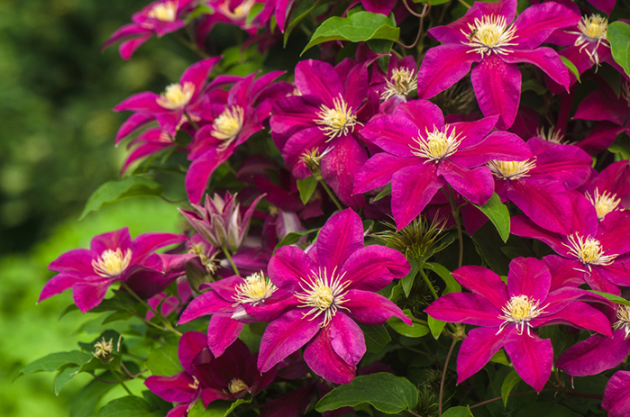
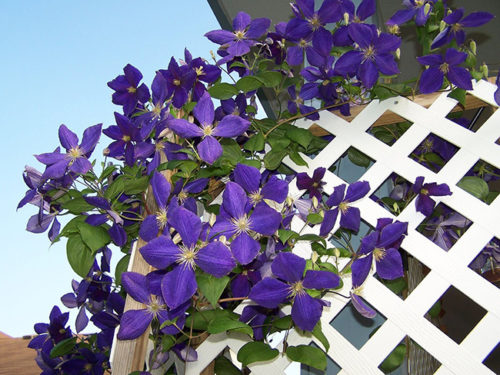
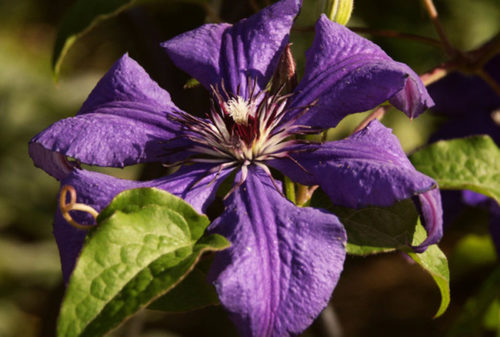
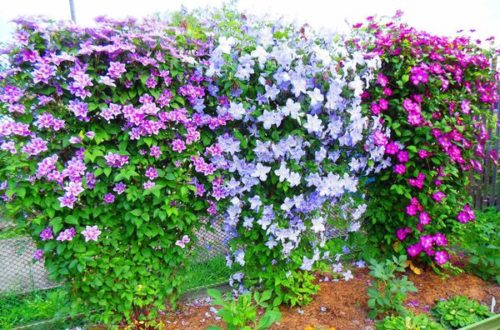
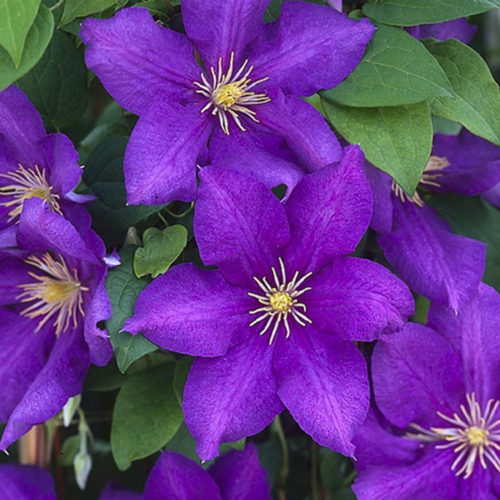
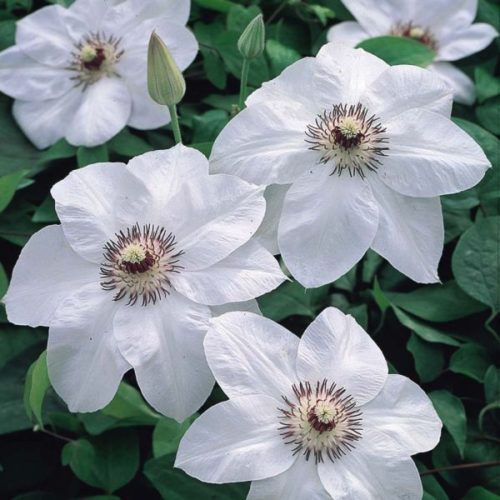
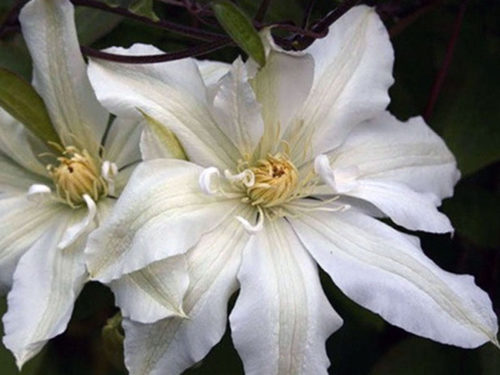
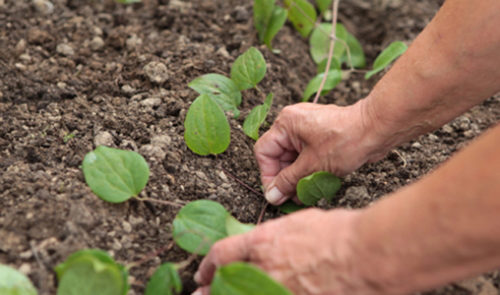
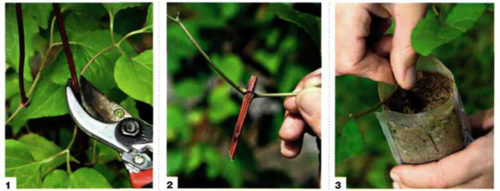
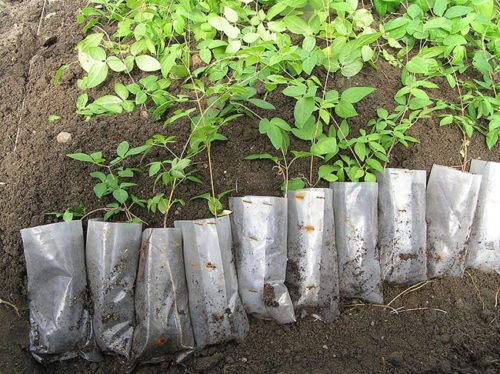
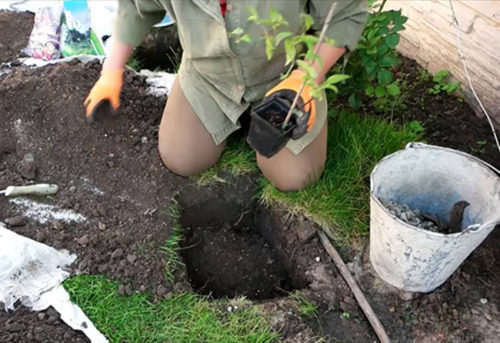
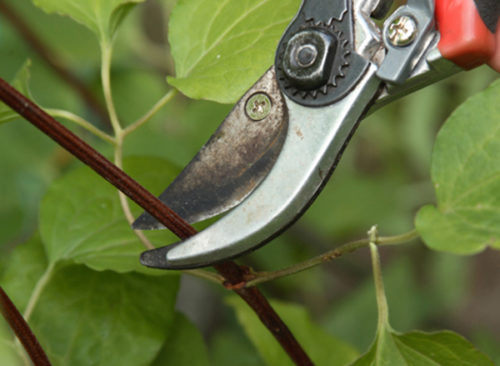
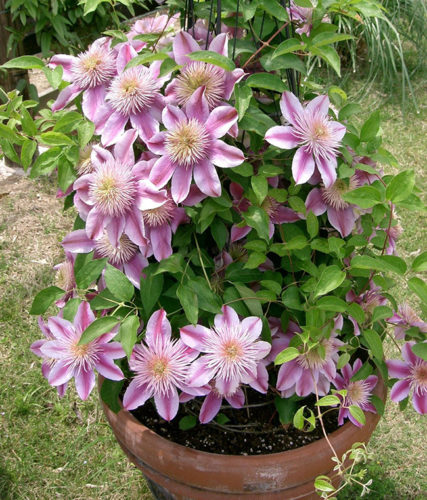
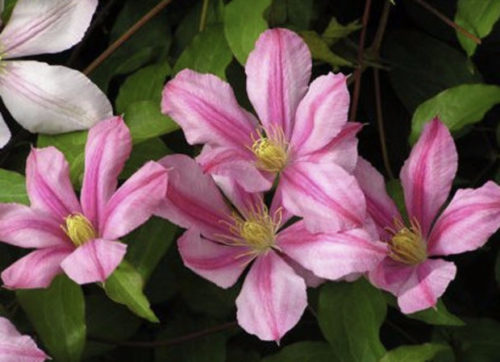
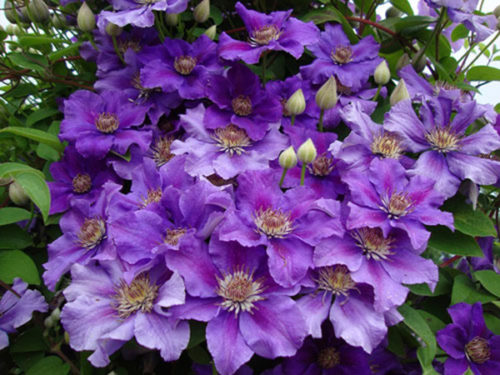
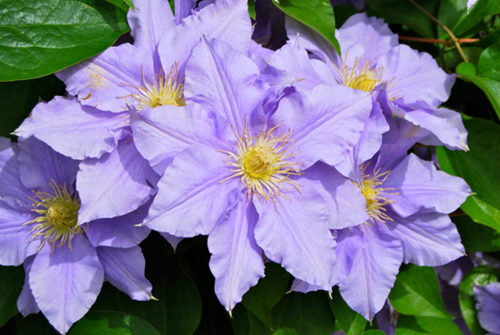
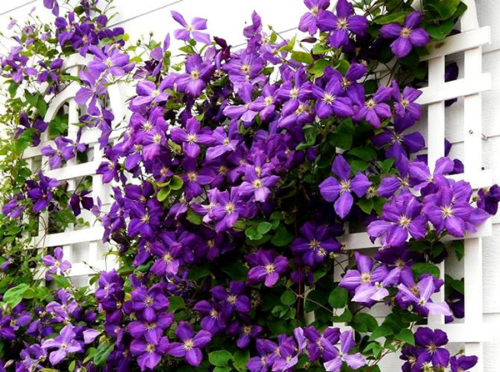
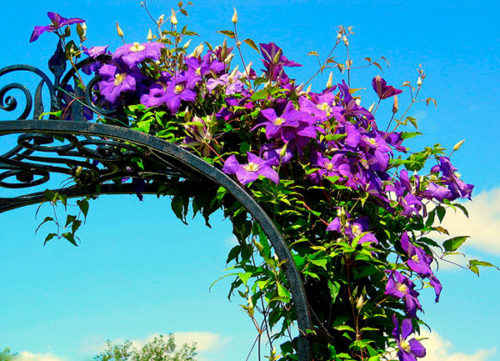












 Start a discussion ...
Start a discussion ...